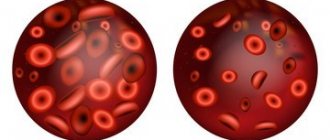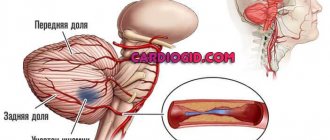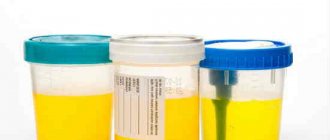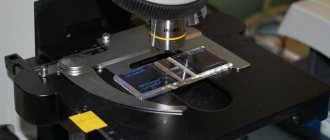In order to determine the level of biologically active substances such as hormones in the blood and immunological complexes, a special laboratory test is required. If a hematological, infectious or autoimmune disease is suspected, specialists prescribe a blood test for ELISA. In the course of the article, we will look at what an enzyme immunoassay blood test is, how to prepare for it, what it shows and how to decipher it yourself.
General views
What kind of study is this - an ELISA blood test? The abbreviation stands for enzyme immunoassay of blood, during which the quantitative and qualitative content of various biologically active substances, as well as antibodies and antigens in biological material is determined.
Mechanism of ELISA
What is used in the enzyme immunoassay of blood:
- blood from a vein;
- cerebrospinal fluid;
- mucus of the urethra, cervical canal;
- amniotic fluid;
- contents of the vitreous body.
Enzyme immunoassay is prescribed for the purpose of diagnosing sexually transmitted diseases, infectious and oncological processes, allergic reactions, disorders of the endocrine and reproductive systems, autoimmune and immunodeficiency diseases, as well as to assess the risk of developing certain diseases of the cardiovascular system and kidneys.
A blood test for ELISA during pregnancy is prescribed for the purpose of early detection of fetal deformity, developmental disorders in the initial stages and monitoring their dynamics. In addition, ELISA analysis allows you to control the level of antibodies that can provoke the development of severe neurological disorders in a child, thereby preventing the development of complications not only during pregnancy, but also during childbirth.
Modern blood diagnostics make it possible to respond to identified problems in advance and significantly improve the health of both the mother and her baby.
What are enzymatic reactions?
Enzymatic reactions are those that allow one substance to be converted into another. The material that is affected during a blood test using the ELISA method is called the “substrate”, and the material obtained under the influence of the enzyme is called the “reaction product”. Moreover, the features of this process are such that one or another enzyme can act exclusively on a specific substrate. This property of an enzyme to determine “its” substrate is called “affinity”. Based on the above, it becomes extremely clear that each enzyme is associated with only one reaction, specific exclusively to it.
It is worth noting that the ELISA diagnostic method involves the use of no more than a dozen enzymatic reactions, as a result of which colored substances are formed, allowing the use of a chemical reaction method - colorimetry - to determine the concentration of the pathogen.
Benefits of analysis
The advantages of blood ELISA include:
- high (up to 90%) degree of sensitivity;
- the possibility of early diagnosis, while simultaneously determining the stage of the disease;
- low cost of reagents, and, consequently, availability;
- minimum amount of material for research;
- minimum time to obtain blood test results;
- possibility of long-term storage of reagents;
- the ability to control the dynamics of the development of the pathological process.
Test systems
Disadvantages of enzyme immunoassay:
- it is impossible to specify the causative agent of the disease; only an immune response to it is obtained in the laboratory
- the possibility of obtaining a false result (in very rare cases, mainly during pregnancy).
Advantages of the diagnostic method
Undoubtedly, enzyme immunoassay has a number of advantages compared to other diagnostic methods:
- With its help, you can determine even the slight presence of pathogenic organisms, which indicates the high sensitivity of the test.
- The ability to detect the disease at the earliest stages, which significantly increases the chance of a successful cure.
- Simplicity and convenience of taking biological material. This analysis is carried out both in private and government laboratories. If necessary, the material can be taken by a nurse from the patient's home.
- A very small amount of biomaterial is required for analysis.
- Get results quickly. Modern medical equipment allows analysis to be performed within 24 hours.
- Possibility of detecting hidden asymptomatic forms of infection.
- Availability of the study.
- If necessary, it is possible to conduct mass examinations using this method.
- It is possible to monitor the course of the disease and the effectiveness of the prescribed treatment, since the ELISA test can be performed many times, absolutely safely for the patient.
- Automation of analysis stages, which eliminates the human factor and increases the reliability of the results.
- Reagents for ELISA are stored for quite a long time - about a year.
- The analysis is possible when the ambient temperature fluctuates.
Preparation
The principle of this type of blood test is based on the formation of specific antibodies in the human body when antigens enter it, that is, foreign agents that cause the development of a particular disease. As a result of their interaction, “antigen-antibody” complexes are formed, which are studied during enzyme immunoassay.
In this regard, in order not to affect these complexes and, accordingly, the reliability of the results obtained, the analysis of blood and other biological material for ELISA requires certain preparation.
Blood is donated on an empty stomach, and 14 days before the proposed examination, specific treatment is suspended and the use of antibacterial and antiviral drugs is stopped.
Blood for ELISA is donated from a vein. Immediately before blood sampling, you should limit physical activity, and also avoid smoking and drinking alcoholic beverages.
ELISA interpretation and analysis result
In the ELISA blood test results form, the transcript is presented in the form of a table, which indicates the indicators for individual types of antibodies. The interpretation of the result is based on the combinations of various immunoglobulins in the body:
| IgA | IgM | IgG | IgE | Result |
| Undefined | Negative | Undefined | — | Recovery |
| Negative | Negative | Negative | — | Lack of immunity to infection |
| Negative | Positively | Positively | — | Acute stage of infection |
| Negative | Negative | Positively | — | Presence of natural or post-vaccination immunity to infection |
| Positive or negative | Negative | Positively | — | Chronitization of the infectious process |
| Positively | Positively | Positively | — | Exacerbation of a chronic infectious disease |
| Positive or negative | Positively | Negative | Positively | Acute helminthiasis |
| Negative | Negative | Positively | Positively | Long-term helminthiasis |
The values of “positive” and “negative” given in the table are relative - if in one laboratory it is considered normal, then in another the normal indicator will differ in numerical value. That is why, if a repeated test is necessary, it is recommended to contact the same laboratory.
Methodology for conducting ELISA
There are several methods and methods for performing enzyme immunoassay: direct and indirect methods, competitive and blocking methods.
The basis for examining blood (any other biological material) using ELISA is an algorithm consisting of two reactions - immune and enzymatic.
During the first, pathological agents bind to the protective elements of the cells of the biological material taken for research. An antigen-antibody immune complex is formed. It looks like this. Antigens are present on the surface of absolutely all cells.
When foreign cells enter the body, they are captured by immune cells (on whose surfaces antibodies are located), which compare data on antigens from the surface of newly arrived cells with information stored in their own “memory”. If these data do not coincide, the body’s protective functions are activated, consisting in the formation of an immune complex.
After this, an enzymatic reaction is carried out, which visualizes the results of the previous reaction. Its principle is based on the transformation of a substance from one to another. For each type of ELISA, the material formed during the immune reaction has a specific enzyme, the treatment with which is used to determine the concentration of the foreign agent (based on the intensity of the color of the solution).
Methodology for conducting ELISA
Phases of enzyme immunoassay
Depending on the suspected disease, the necessary antigen is used from the enzyme immunoassay kit, which during a chemical reaction in the presence of infection will contact the pathogenic flora. This process is called conducting an immune response.
Then, in order to visually determine the result of the study, an enzymatic ELISA phase is performed. It involves coloring the material using special reagents. The enzymes used in this study are alkaline phosphatase, peroxidase and avidin. Depending on the resulting color during chemical reactions, the result of the enzyme immunoassay is determined.
Decoding
Thanks to the ELISA blood test, laboratory technicians determine the content of immunoglobulins A, G and M in the blood test. A positive result when testing blood (other biological raw materials) for ELISA makes it possible not only to make a diagnosis, but also the stage of the disease, as well as the nature of its course (acute or chronic).
These immunoglobulins, in the presence of a pathological process in the patient’s body, are formed during different periods of the disease:
- Immunoglobulins M, IgM - are formed five days after the onset of the disease and remain in the blood for 1.5 months, after which they disappear. Detection of IgM indicates the presence of an acute primary pathological process in the body and the need for enhanced therapeutic intervention.
- Immunoglobulins G, IgG - appear four weeks after infection, their presence in the body can be detected for several months. Detection of IgG indicates a person's history of previous disease. An increase in their level may also indicate re-infection.
- Immunoglobulins A, IgA - appear at the time of infection and are present in the body for four weeks. A decrease in their content indicates the beginning of recovery. Reappearance in tests after a person has undergone treatment and recovered indicates that the disease has become chronic. The simultaneous detection of IgA and IgG in the ELISA results also indicates the presence of a chronic process in the body.
It should also be noted that the simultaneous presence of IgG and IgM in the analyzes indicates that the chronic process has worsened and the patient needs to start treatment. If none of the immunoglobulins were detected during the examination, this means the absence of an immune response.
What can affect the result
Despite the fact that ELISA is considered one of the most accurate tests of our time, it can give a false negative or false positive diagnosis. Incorrect results, fortunately, are very rare, but small deviations from real indicators occur in about a third of cases.
The accuracy of the analysis can be affected by:
- violations of blood sampling norms for analysis;
- violation by a laboratory employee of research standards;
- the presence of rheumatism or another rheumatic disease not mentioned in the anamnesis (such pathologies are always included in a kind of “stop list”);
- pronounced disturbance of metabolic processes;
- acute or complicated course of HIV.
Significant errors can occur if the patient does not comply with the rules for preparing for the analysis. Thus, shifts in indicators are noted in the results of patients who take medications for a long time. The concentration of various immunoglobulins also changes slightly if dietary recommendations are not followed on the eve of blood donation.
To avoid false results, it is recommended to inform the doctor about all chronic diseases, as well as medications that cannot be stopped at the time of the test. The day before blood sampling, it is recommended to give up alcohol, fatty foods and smoking. The test must be taken on an empty stomach.
The next video will talk about blood tests:
peptic.ru












